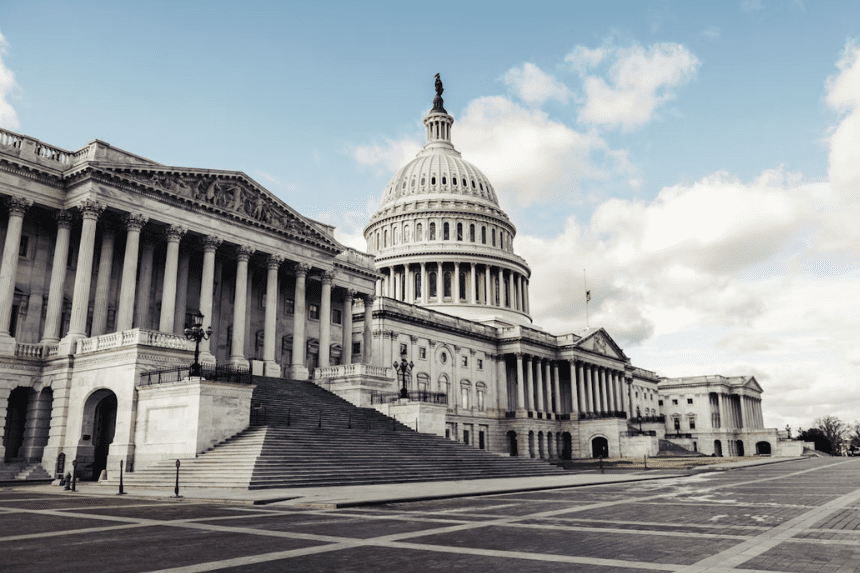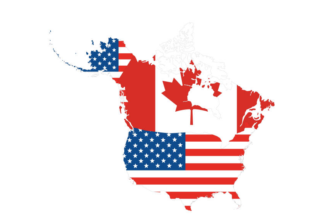The United States is on the verge of another government shutdown if Congress fails to pass the funding bill by midnight on Tuesday. The deadlock has once again placed the federal budget at the center of a political deadlock; Republicans and Democrats are unable to reach a consensus on major expense provisions.
Although the political performance on funding in Washington is nothing new, the current disagreement has increased due to deep division on healthcare policies and cuts in vital services. Without a resolution, a large part of the federal government can be temporarily forced to shut operation.
Why Might the Government Shut Down Again?
A potential government shutdown hinges on the inability of Congress to approve funding for the new fiscal year. While Republicans hold majorities in both chambers, they lack the 60 votes required in the Senate to push through a spending bill without Democratic support.
Democrats are using this opportunity to demand the continuation of federal health insurance subsidies and to reverse recent cuts to Medicaid. They also oppose reductions in funding to the Centers for Disease Control and Prevention (CDC) and the National Institutes of Health (NIH). Despite a temporary funding bill passing the House, the Senate has yet to move it forward. Here is the link to our article on Tillis Leaving Congress.
When Could a Shutdown Begin?
If lawmakers fail to reach an agreement, the government shutdown would begin at 12:01 a.m. EDT on Wednesday. This would mark the first shutdown in nearly seven years.
The last significant closure occurred in late 2018 and extended into early 2019, lasting 36 days—the longest in U.S. history. Leaders from both parties are scrambling to avoid a repeat scenario, but optimism remains low.
What Are the Chances of a Shutdown?
As the deadline approaches, the chances of a shutdown are high. The White House has shown little willingness to compromise, while Democrats insist on healthcare-related concessions.
Each side believes public opinion will favor them. Republicans argue that Democrats are obstructing necessary legislation, while Democrats claim their stance protects millions of Americans who rely on affordable healthcare coverage.
This battle comes after earlier disappointments for Democrats, who previously faced backlash for retreating during budget negotiations. Many now see this moment as a crucial opportunity to assert influence. Here is the link to our article on Texas Redistricting Congress.
What Makes This Shutdown Threat Unique?
Unlike past situations where shutdowns were politically risky, the current administration appears open to the idea. Officials have even suggested using the shutdown to evaluate and possibly eliminate “non-essential” government roles permanently.
The administration has already reduced the federal workforce size and funding. A shutdown could accelerate these efforts, reshaping how the government operates in the long term.
How Would a Shutdown Affect Daily Life?
If a government shutdown occurs, essential services like border security, air traffic control, and emergency medical care will continue. However, disruptions to everyday life would be widespread. National parks may close, and federal student loan processing could face delays. Food inspections might be paused, raising safety concerns. Government-funded pre-school programs may also be suspended, affecting families and educators.
Additionally, non-essential federal employees would be furloughed without immediate pay, creating financial uncertainty. While back pay is often granted later, the delay can strain household budgets. Travel could also be impacted if the unpaid transportation workers stop reporting for duty. These disruptions underline the broad consequences of a government shutdown across multiple sectors.
Are Shutdowns Common in the US?
Yes, budget-related shutdowns are fairly routine in American politics. The most notable was the 2018–2019 closure, which cost the economy an estimated $11 billion.
Previous presidents, including Ronald Reagan, also experienced multiple shutdowns during their terms. Unlike other countries where budget votes can topple governments, the U.S. system allows branches to operate independently, making deadlocks more likely.
Final Thoughts
Due to the time limit, the possibility of a government shutdown is increasing. Both sides are firm on their demands, especially about healthcare funding. If no compromise is made soon, America cannot withstand another disruption to important public services. The deadlock is more than a budget issue – it reflects the widespread political division that shapes the US rule.








